
Snowblowers are essential when you live in a cold climate. Keeping them correctly serviced and running well means clear paths and fewer slips and falls. The best snowblower oil will allow you to do just that, and the best great news is that choosing your own oil for snowblower usage is simple.
We’ve reviewed the five best snowblower engine oil products on the market so that it’s easier for you to make the correct choice for your specific machine. The oil that achieved our Editor’s Choice tag is the excellent Valvoline Advanced Full Synthetic Motor Oil. It got there because Valvoline Advanced Full Synthetic snowblower oil is a superb viscosity for most climates, it comes in a pack of six, and it’s a high-quality, fully-synthetic oil. But don’t hesitate and have a closer look at the other four products.
The best snowblower oil for you needs to fit the bill concerning several different qualities. If you’re confused about what makes an excellent oil for snowblower engine use, don’t worry, our reviews and buying guide explore the most important of those qualities in a way that’s simple to understand. We’ve taken the mystery out of oil weight, looked carefully at how temperature affects oil, and we’ve delved into what oil capacity means. We’ll also help you to better understand the different factors and features that will enable you to make the right choice when it comes to purchasing oil for your own snowblower, so read on!
Of the five best snowblower engine oils we could find out there on the market, Valvoline Advanced Full Synthetic Motor Oil made it to the top of our list and gained our Editor’s Choice award. That was primarily because when you are looking to put fully synthetic oil in snowblower engines, you are generally looking to find several certain qualities in a product – and Valvoline Advanced Full Synthetic Motor Oil ticked all those boxes, and then some.
To begin with, Valvoline Advanced Full Synthetic Motor Oil fits the bill when it comes to viscosity and the temperature environment of the average snowblower user. At 10w30, Valvoline Advanced Full Synthetic Motor Oil a sufficient range to meet the recommendations of most snowblower makers – although it’s important to read the manual supplied with your specific machine before you buy engine oil.
Valvoline Advanced Full Synthetic Motor Oil is also a fully synthetic motor oil, and that means better lubricating performance and longer service intervals than if you were using mineral oil.
If you are yet to be convinced, consider that Valvoline Advanced Full Synthetic Motor Oil comes in a six-pack, which means you won’t be looking for motor oil when you need it most, and the winter sets in. Overall, Valvoline Advanced Full Synthetic Motor Oil represents a conveniently packaged option, with all of the qualities you need in a snowblower oil, for a very reasonable price.
Just missing out on the Editor’s Choice award in our list of the five best snowblower oil products we could find, but getting the Best Value title, is AmazonBasics High Mileage Motor Oil. This oil represents a very versatile option when it comes to the snowblower lubrication market, and it will appeal to a whole bunch of people because of that.
Of all the buyers who might like the look of the AmazonBasics product, owners of older snowblowers will likely be the keenest. AmazonBasics has engineered this fully synthetic oil to be suitable for engines that have more wear, and that could mean prolonging the life of machines that have had more use, or a harder service life. Couple that with a very respectable viscosity range of 10w30, and you have an oil that will perform exceptionally well in a wide range of temperatures, right down to markedly cold.
If you don’t – or don’t have the time – to service your snowblower often, AmazonBasics boast long periods between required oil changes with this product. All in all, this is an engine oil with a lot going for it.
Making it into the third-place slot in our list of the five best snowblower oils is Mobil 1 94002. This oil is a fully synthetic version, so you can be sure it will last a good deal of time between changes.
Of all the fluids that you put in your snowblower, the motor oil is arguably the most important. Oil is the lubricant that goes to the very heart of every machine, protecting its parts from premature wear. The right oil will prolong the life and maintain the reliability of any engine, big or small. The wrong lubricant can make pretty short work of a perfectly good motor. Mobil has been a leading manufacturer of engine oils for decades, and there’s no reason to worry that Mobil 1 94002 won’t do a job for snowblower owners.
The manufacturer boasts outstanding wear protection, and excellent high and low-temperature performance – although, this is a thicker product and works over a relatively broad viscosity range. It won’t be suitable for the coldest of climates, so make sure to check that this oil fits within the parameters specified by the manufacturer of your machine before you buy.
The fourth snowblower oil product on our list of the best five is TECUMSEH 730226B. This is a reasonably priced snowblower oil option, and it comes in a single pack.
Clearing paths, making sure that driveway is drivable – whatever you use your snowblower for, the likelihood is that it’s connected with keeping your family moving, and making sure that every member of your household is as safe as possible. You need to know that when you return to a vitally important piece of equipment, it’s going to be ready to fire up and do its job – every time. The trouble with colder climates, however, isn’t just the snow. Making sure your vital home and garden maintenance machinery is working when you need it gets harder – and more expensive – as the mercury drops, and it’s essential to balance cost with function.
TECUMSEH 730226B may not be the most well-known motor oil out there on the market, but what’s vital to snowblower owners is viscosity, and TECUMSEH 730226B is 5w30, which means it will keep lubricating your machine’s engine in the coldest of conditions.
Last but not least, on our list of the five best snowblower oil products is Ariens 00091000. Ariens snowblower oil may or may not be familiar to you already, however, if you are looking for a decent snowblower oil because you use your machine often due to the nature of the climate in your specific locale, this manufacturer may well be worth considering.
That’s because Ariens 00091000 is mineral oil, and while that offers slightly shorter service life than synthetic oil, it does keep the cost down significantly if you need to change your snowblower oil often.
Machines, such as snowblowers or lawnmowers that get seasonal use, are always more prone to breakdowns than tools that are used all year round, so they need frequent servicing. With a weight rating of 5w30, Ariens 00091000 might just be an excellent choice for those who live in harsher geographical areas and find themselves changing their oil every couple of months. This viscosity suits cold weather, and you won’t be breaking the bank to keep your snowblower running.
If there is one item of home and garden equipment that is vital when the bitterly cold winter season sets in, it’s the snowblower. This extremely useful tool sits idle for a lot of the year, but when the snow begins to fall, and you need to keep your household running, that’s when the snowblower comes well and truly into its own.
Regular servicing and being careful about everything you put into a machine with moving parts are the keys to keeping it running when you need it most. That’s why we’ve put together this buying guide.
Picking the best snowblower oil for you will depend a lot on which particular machine you are running. A great place to start is to be sure and read all of the literature the manufacturer supplies with your snowblower at the point of sale. The various engines out there are designed to be used with different oils. That may sound surprising, as most snowblowers look pretty similar to each other, but small engines can differ massively in the way they are engineered.
The job that oil does inside your snowblower is keeping the engine parts lubricated in order to prevent unnecessary wear. Engine parts move at an incredible speed, so a tremendous amount of damage can be done in a very short time if the motor oil level is low, or an incorrect type of oil is used. We’re about to look at the factors that influence which oil your manufacturer recommends, and this will help you to understand better how to look after your own machine.
Engine oils come in three main types. So, which snowblower oil type do you need? You’ll find fully-synthetic, semi-synthetic, and mineral. There’ll be more on this subject later in our guide, but be sure to check whether or not the maker of your snowblower recommends either one of the three types.
Your snowblower will have a stated capacity for motor oil. The capacity is defined by how much oil is required to keep the engine lubricated and protected during normal usage of the machine. Every engine is designed differently, but all require some form of lubrication to prevent them from seizing up, corroding, and causing excessive wear to moving parts. Your own snowblower engine will have channels and places engineered into its design where oil is meant to flow and collect while its engine is running and idle. The volume of oil required to do that is the total volume of oil capacity.
Inserting more or less oil can be detrimental to the longevity of your machine, so it’s important to keep it topped up, add the correct amount during oil changes, and make sure not to overfill.
Be careful not to be attracted purely by the size of the container your new motor oil arrives in. You’ll notice that in our buying guide, some oils come in a multi-container package. That’s the case with our number three pick, Mobil 1 94002. When weighing up the total volume of oil in any particular offer, remember to multiply the container size by the number of units in the pack.
Oil weight is a source of much confusion for many people, but there really is no need for it to cause a problem. When manufacturers refer to the ‘weight’ of an oil or lubricant, they’re really referring to its viscosity – or thickness. The easiest way to think about it is that oil with lower numbers is thinner. Think TECUMSEH 730226B, at 5w30. Oil with larger numbers is thicker. Think Mobil 1 94002, at 15w50.
Generally, the lower of the two numbers in a viscosity rating is the true viscosity of the oil when it’s operating hot, and the higher number refers to the weight of the oil when the temperature is cold.
Different engine designs have different needs, and the weight of the oil is one of them.
Engine sizes typically define how much oil you will need to buy or use every time you change your oil. Larger motors of heavy-duty snowblowers tend to have a greater capacity for oil storage and also require a greater amount of oil in order to fill the many capillaries and parts of the engine which hold and enable the flow of oil. If you own a larger, for example, three-stage snowblower, expect to use more oil.
Temperatures and the weather in the place where you live are factors in defining which oil you will need to use in your snowblower.
When you carefully read the instructions that the maker supplied with your machine, you will very likely notice that they make more than one recommendation when it comes to the weight of the oil you need to use. That’s because oil’s viscosity is affected by the ambient temperature. It tends to thicken up when the weather is extremely cold, and thin out again when things warm up – allowing it to flow more freely. Pay attention to the viscosities and weights that the manufacturer recommends for your specific snowblower because some engines have smaller capillaries and channels for lubricant than others. In those cases, if you live in colder climes, the engine can be starved of vital lubricant when the wrong oil is used, and serious damage can occur.
Price is often an indicator of quality when it comes to motor oil, but just as with anything else, that isn’t always the case. Picking the correct type and weight of oil is more important than how much you pay for it, as is adhering to service schedules and keeping the lubricant topped up when required between changes. The best oil for snowblower use is oil that’s regularly changed!
Fully synthetic oils, such as Valvoline Advanced Full Synthetic Motor Oil, which made the number one spot on our list, tend to be more expensive than pure mineral oils. AmazonBasics High Mileage Motor Oil and Mobil 1 94002 are also good examples of fully-synthetic oils. The difference in cost is mainly because the process of making fully-synthetic oil is more complicated and expensive. Semi-synthetic oils are middle of the road when it comes to cost. Mineral oils are just a refined version of crude mineral oil, and so the manufacturing process is shorter and cheaper. That’s why mineral oils like Ariens 00091000 on our list – which is a blend of oils – are more affordable. Mineral oils usually break down more quickly than engineered synthetic versions, and when oil breaks down, it loses its lubricating properties.
In the case of any engine, there are usually three main components you need to think about when changing the oil. The oil itself is one of them, the second thing is to check for an oil filter, and the third thing is to find the point from which to drain the old lubricant. Once you’ve identified the correct oil type, the location, and size of the drain bolt and the recommended filter for your machine, all you’ll need is a good pair of disposable gloves, because used oil can contain chemicals and particles which are harmful to your skin.
The first step in changing the engine oil is to run the motor. It’s better to drain oil when it’s hot, and the viscosity is higher. Run the engine up to operating temperature and let it tick over for a couple of minutes. That will ensure that the oil flows freely from the system when you come to drain it.
Next, remove the oil filler cap and locate the sump or drain plug. That will usually be in the form of a bolt. Make sure to use a drain pan and catch all of the oil so as not to pollute your environment. Remove the sump bolt carefully – because that oil is hot – and let it drain completely for a time until the flow and any dripping stop completely. You may have to wait a while.
The next step is to remove any oil filter carefully. Make sure to have your drain pan in place to catch any remaining oil that escapes from the filer and housing when you remove it. At this point, it’s a good idea to make sure that all of the oil has drained, and to have a cleanup, wiping any facing surfaces at the filter and drain point with a clean rag.
Now you’re ready to replace the drain or sump plug. If your manufacturer recommends that you use a new plug every time the oil is changed, it’s essential to do that. Fit the drain plug and tighten it back up.
Next, you’re ready to fit a new oil filter. With some versions, you’ll need to fill the filter with fresh oil before you install it. Check your manual for specific instructions for your own machine. Some oil filters will feature a rubber seal, and it’s a good idea to smear some fresh oil on that, in order to ensure against leaks. Then, fit the new filter as per the manufacturer’s instructions.
The last step, and probably the most satisfying, is to refill the system with fresh oil. Be extremely careful not to overfill. If the manufacturer states a capacity of two liters, for instance, fill shy of that mark – and remember that you may have already introduced some oil when you fitted the filter. Stay shy of the stated capacity, and leave the level to settle before checking. Because oil is thick, you may want to grab a coffee and return a while later. Then, remove and wipe the dipstick clean – because it will not show an accurate reading due to contamination of the stick when you filled the system. Then, reinsert the rod, remove again, and check the reading. Top up the level as required until you’re sure that the correct amount of oil is within the machine. Remember to replace the filler cap before you fire up that newly lubricated engine.
So, we’ve taken an in-depth look at some of the best oils that are available on the market for you to use to enhance the performance and prolong the life of your snowblower. The product that emerged as the best snowblower oil we could find was Valvoline Advanced Full Synthetic Motor Oil. We awarded Valvoline Advanced Full Synthetic Motor Oil the title of our Editor’s Choice because it’s a fantastic, fully synthetic motor oil, and it’s available at a price that everyone can afford.
Coming in a very close second place on our list of the five best snowblower oils on the market is the excellent AmazonBasics High Mileage Motor Oil. This oil very nearly bagged our top award, and it’s another product that will keep your snowblower working fantastically well for Winter seasons to come – even if its operational hours are beginning to add up.
The oil that made it into third place on our list was another fantastic product that is available at a very reasonable cost. Mobil 1 94002, especially given it comes in a rather large package. All three of our top picks come with a unique attribute, and there’s an oil for every consumer on our list.
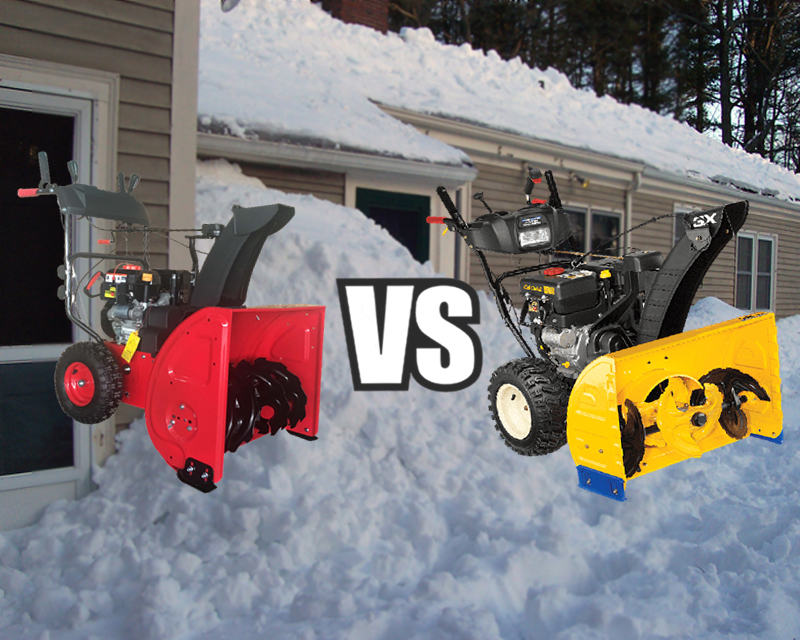
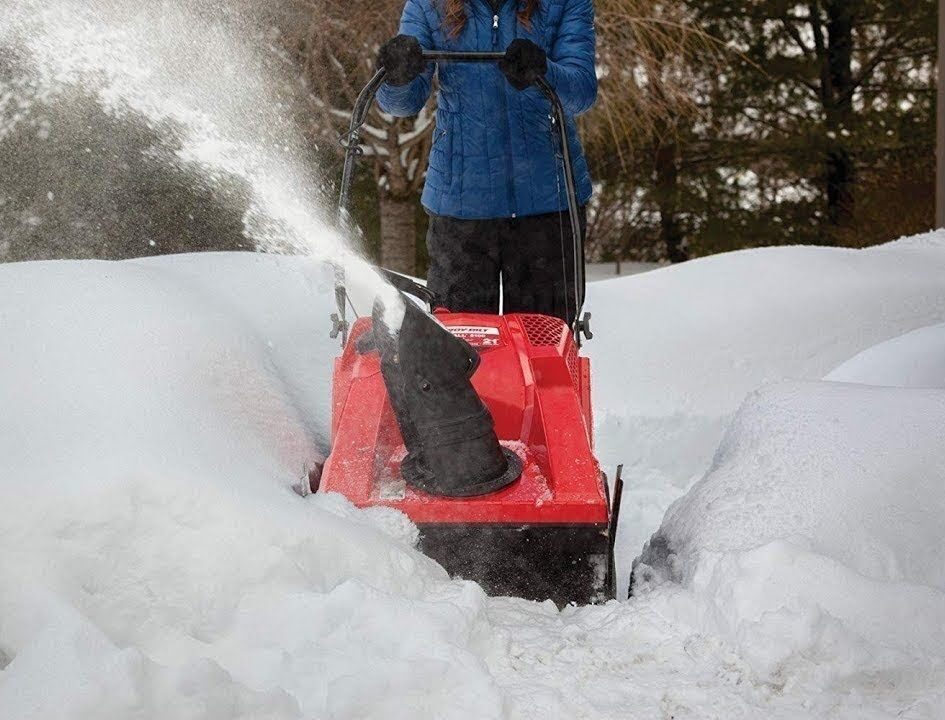
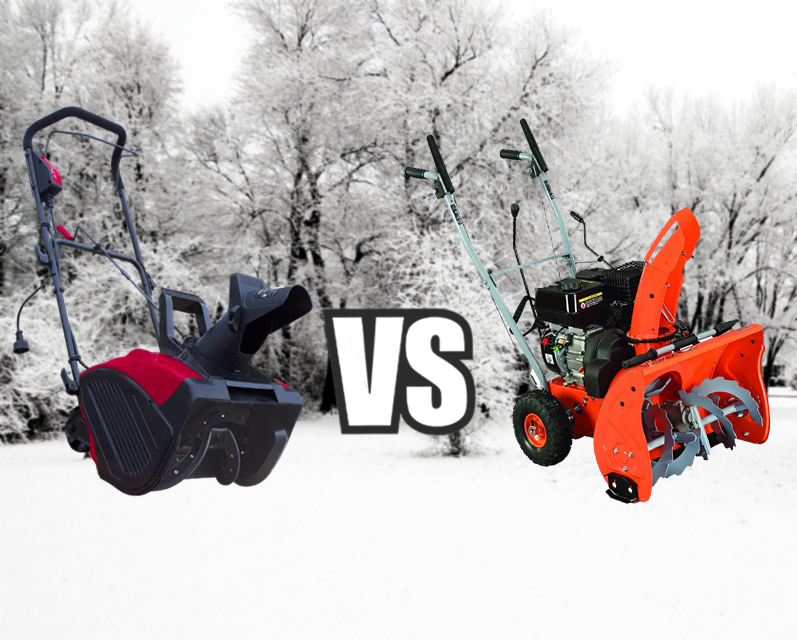
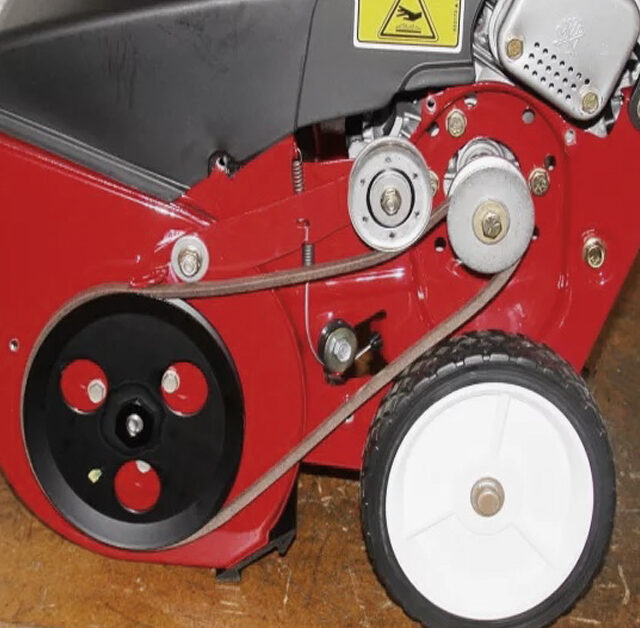
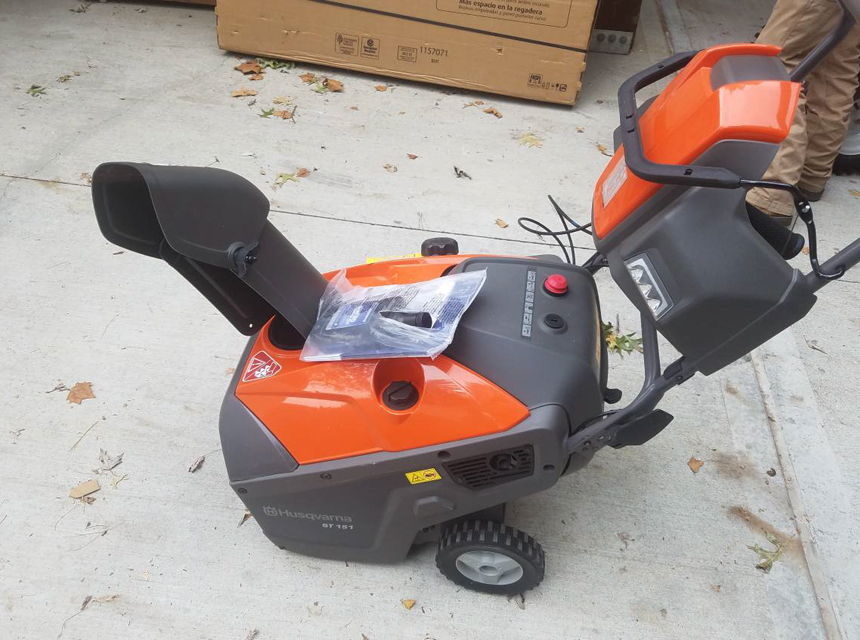

Valvoline is great oil! Works not only for my snowblower. I’ve been an ASE-certified mechanic for over 20 years at a GM dealership. I use only Valvoline synthetic oil in all of my vehicles. There is some other oil that some people might want, but I will only use this. You can see the difference in the freezer, where I have frozen one of these oils.
Where is Amazon oil made? And who really makes it?
Amazon doesn’t make any products, actually. This one is made by Warren Distribution. But most products are too. All of the best brands. However, they all have to follow their recipes just like any other product in the world that has the same recipe for sauces or ice cream etc. This oil is some of the best I have ever used and it passed all quality control tests better than more expensive motor oils including Mobile1 and $45 per quart oil from Germany.
How often should I change oil? Any recommendations?
One time per year is recommended. You should not use oil more than 2 years without changing it, because it can make it hard to start your engine when the new season comes.
What kind of oil should I use in a snowblower? A specific type, I guess? Who knows for sure?
Well, obviously, you run snowblowers in winter, which means that it’s cold. So it’s better to use 5W-30 weight oil which is better for cold weather. Make sure to check your owner’s manual for the right weight of oil.
Mobil 1 5W-30 is a great option as well. It’s been a cold winter this year, and my snow blower ran on this just fine.